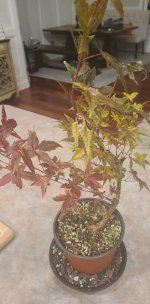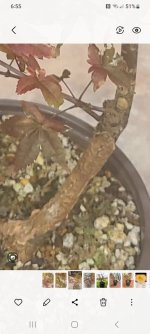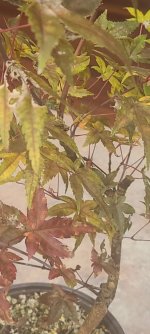Here is an image from Merggioli's book.
There are certain characteristics that are reliably different between each member of the holy trinity:
- shape of the central lobe (Seigen is unmistakably slender; Beni Chidori tends to transition from wide to thin quickly; Deshojo looks like a cartoon flame of a candle).
- yellow veining
- serration - of the 3, Beni Chidori has the largest serrations that are the most choppy
- coppery-red of Deshojo as opposed to red and a green that is more yellow, pale green, or chartreuse like Seigen and Beni Chidori
- leaf shape - it is said that beni chidori 'fits in a coin' as opposed to Seigen which has more vertical length
Of these 3, your plant looks most like Deshojo but I would never, ever guess any Japanese Maple cultivar. However, it is possible to rule out cultivars: your plant is definitely not Seigen, and it is not Beni Chidori.
The USA has a major issue because even otherwise reputable vendors (I could name you 5, but I won't) have been sold plants labelled as 'Seigen' that were Deshojo, Beni Maiko, and a number of other cultivars... and they have been propagating and selling them as 'Seigen'. Some of them have been advised by committees responsible for Acer palmatum cultivar registration and nonetheless continue to sell their 'fakes'. A few of them claim 'a japanese master told me it's Seigen' to which the committee just rolls its eyes. Hobbyist unfortunately are very excited when they find a 'Seigen' and rightfully jump on the opportunity -- some of them end up propagating their plants. The entire situation is very unfortunate.

Repeating for people who don't know - the best Japanese maple bonsai are not cultivars. In Japan they sow JM seeds and select those that have the best characteristics for bonsai. They aren't cultivars.... one could actually say they are each unique!
and the reverse is also true, if not more true







